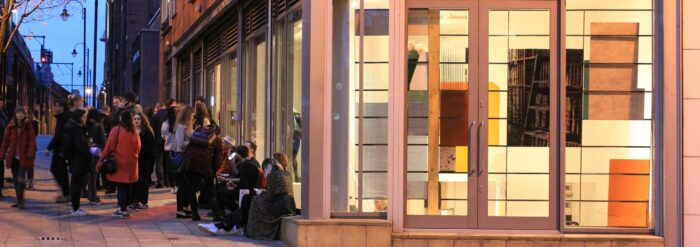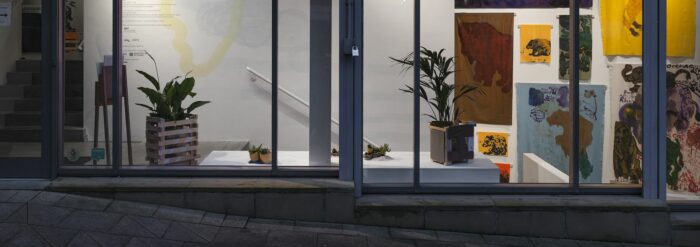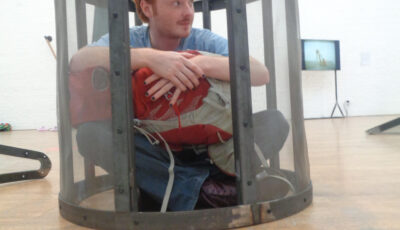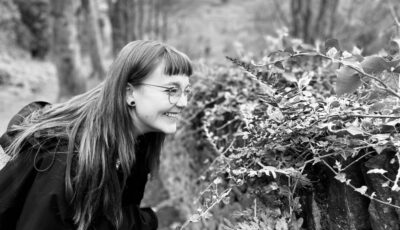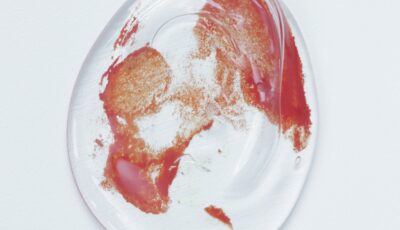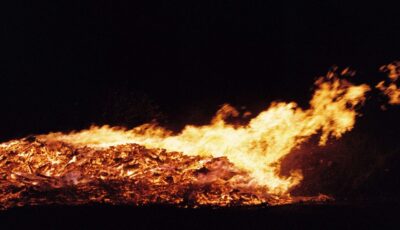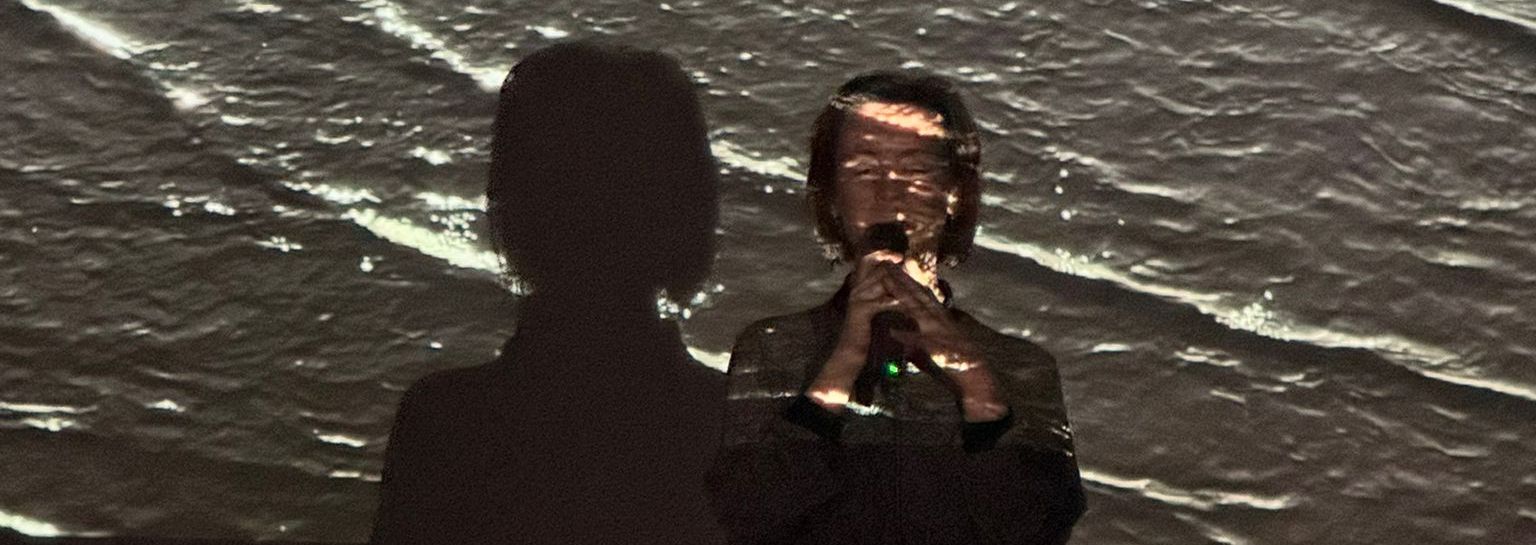
Artists and Sustainability Spotlight: Fiona Sinéad Brehony
Posted on 9 July 2025
This month we’ve invited Fiona Sinéad Brehony to contribute to our ongoing series Artists and Sustainability Spotlight, where we ask artists to share short responses about their work and how it might relate to climate change.
Fiona Sinéad Brehony is a Manchester-based artist and writer, working within spaces between Geography, documentary film, sound art and performance. Fiona is currently working on a research project that investigates possibilities of rivers as Cultural Heritage, with a specific focus on the socio-material history of River Irk in Manchester.
Environmental River Historians have studied the tangible material flows of rivers using intangible evidence such as oral histories and archive records as a way to (re)construct the past, make sense of the present and to (re)imagine possibilities for future rivers. Fiona’s work aims to expand these studies by looking at material flows of the River Irk that no longer exist, establishing collaborative documentary filmmaking as a method in this field.
Fiona’s art practice explores the relationship between history, memory and visual and written narrative. She employs a research-based approach, working across a range of media. Previous artworks have utilised specialist expertise, involving collaboration with scientists and composers, to create lyrical and inquisitive connections between people and their environment. Fiona’s work takes the form of creative documentary and audio-visual installations that are exhibited in galleries and museums.
Fiona will be leading a Liquid History workshop at The Rock Mill Centre in New Mills on Sunday 20 July 2-3:30PM. Learn more here
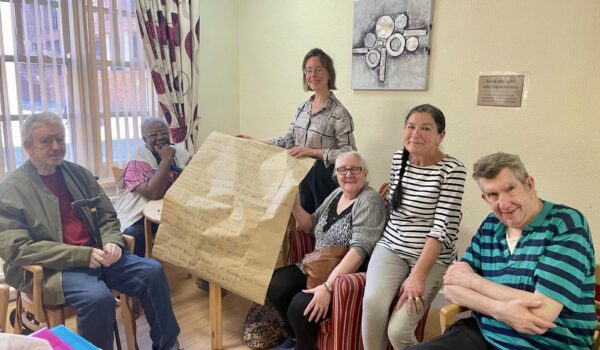
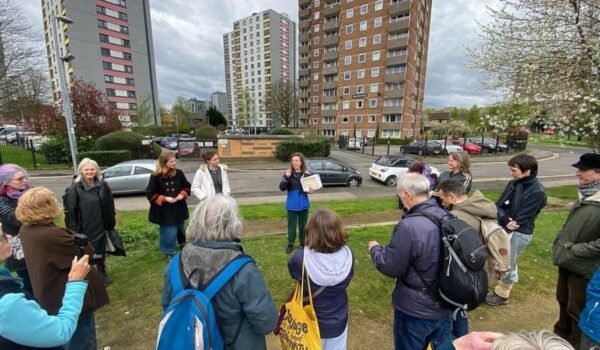
In what ways do you feel your work might relate to issues of climate change and sustainability, in the content of the work, its narrative, conceptually or theoretically. How might it speak to or challenge public discourse?
As a filmmaker and sound artist, my work explores how people and places shape one another – particularly in areas where natural and built environments are in flux. Climate change and sustainability emerge in my practice through place-based research, collaborative storytelling, and embodied listening practices. I work with rivers as both subject and methodology; as flowing systems that hold ecological, historical, and emotional meaning.
Drawing on environmental historians such as Leona Skelton and Peter Coates, I consider rivers as dynamic, socio-material and ecological entities shaped by natural forces and human labour. Richard White’s concept of the ‘Organic Machine’ further informs my understanding of rivers as living systems that embody histories of extraction, industry, and regeneration. I find this perspective challenges static or purely utilitarian views of waterways and invites a more nuanced appreciation of their complexity.
Artist and composer Annea Lockwood’s work with rivers deeply inspires my approach; her attention to their sheer aliveness and the ways rivers shape their own geology encourages me to listen attentively to the rich soundscapes beneath the surface. Using hydrophones and contact microphones, I capture these submerged sonic worlds, seeking to reveal the often-invisible ecologies and histories that pulse through post-industrial riverscapes like the River Irk.
Currently, I am focusing on the River Irk in North Manchester, where I’m working closely with local residents to document lived experiences amid significant regeneration. In collaboration with Many Hands Craft Collective, I’m co-creating a film exploring changes in natural light within their neighbourhood, reflecting deeper transformations in landscape and identity. This builds on earlier multimedia work with residents in South Manchester, including a remarkable poetry collection by a resident rehoused by the council in her 80s after over sixty years in the same home.
These intimate, place-rooted narratives offer a vital counterpoint to dominant public discourse, which often flattens climate and urban change into abstract crisis or economic opportunity. Instead, drawing on insights from scholars like Stefania Barca, who emphasises inclusivity and care in community engagement, my work holds space for multiple voices – human and more than human – and for sensory, memory-rich experiences of place.
Through archival imagery, sound recordings, and participants’ own words, my practice seeks to nurture creative reflection and community dialogue, asking: what does it mean to notice change, to carry memory, and to remain attentive in times of erasure and acceleration? How can inclusive, artistic practices help people feel connected to environmental issues that might otherwise feel distant or overwhelming?
With regards to the materials, processes and techniques you use to produce your work, are there any practical decisions you make with regard to climate change and sustainability?
Yes – my approach to materials and methods is deeply informed by principles of sustainability, rooted not only in environmental impact but also in ethical, relational, and temporal considerations.
In my sound practice, I prioritise minimalism and mobility by using small, durable, and low-energy equipment such as hydrophones, contact microphones, and handheld recording tools that allows me to work intimately with environments and communities, often outdoors and on location. This low-impact approach supports a form of co-creation that is quiet, attentive, and centred around care for place and people.
A pivotal development in my practice has been hanging a piece of durational cyanotype material at HMG Paints, a historic riverside site on the River Irk, as a way to build relationships with both people and river. This work draws from sunlight, river water, and plants gathered locally – inviting natural processes and materials into the creative act. This slow, evolving piece has opened up new possibilities for working with sustainable materials that are deeply embedded in the ecology and industrial history of the river. I see it as a form of ‘material listening’, where the rhythms of light, water, and seasonal change become collaborators in the artwork, revealing the traces and textures of place through time.
Through this durational cyanotype work, I am beginning to explore other natural printing methods such as anthotypes; ephemeral techniques, shaped by weather, light, and local flora. These practices encourage me to slow down in response to environmental cycles, to pay attention and to work with humility and care; qualities essential to sustainability beyond the purely material.
Sustainability, in my view, also entails resisting the urgent pace of urban development. I strive to cultivate long-term, reciprocal relationships with communities and environments – work that remains open to revision, dialogue, and evolving meanings. This approach challenges dominant models of productivity and permanence, instead privileging care, memory, and adaptability as a vital resource to sustainable artistic practice.
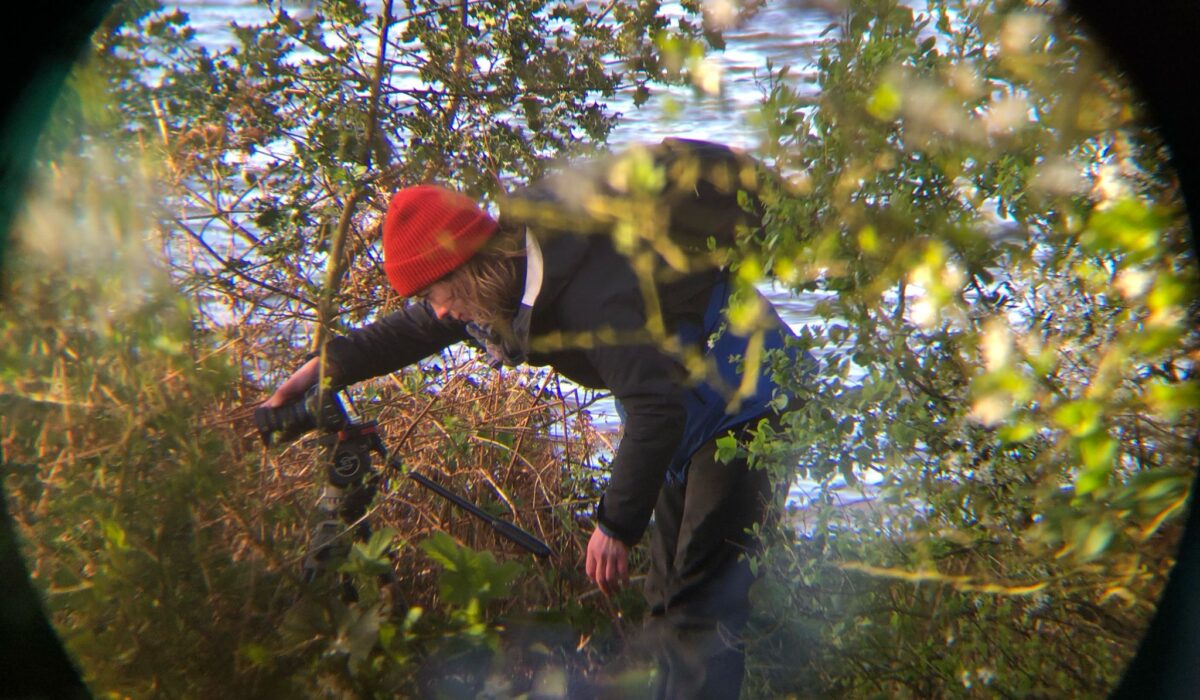
In general, how do you feel galleries, art spaces, artworks and artists might be able to contribute? What if any role do you feel they can play in a progressive conversation?
Art spaces can provide time and permission to listen – something often missing from dominant environmental narratives. They act as meeting points for public imagination, where research, community voices, and sensory experiences converge. Supporting research-led, participatory, and experimental work rooted in local contexts is especially valuable.
In my Liquid History workshops, held in libraries and community spaces, participants engage with rivers as living archives of social and ecological memory. Using archives, creative writing, sound, and natural materials, we explore how water shapes landscapes and communities, revealing stories of displacement, regeneration, and resilience. This approach centres rivers as collaborators rather than backdrops to human life, aimed to evoke insight into care, identity, and change.
Given the urgent environmental challenges, including the impact of plastics and other harmful materials on waterways, such creative practices can further open up critical conversations about sustainability and environmental guardianship. If galleries and museums want to support sustainability meaningfully, they could invest in such open, process-driven encounters that emphasise community care, material mindfulness, and collaborative storytelling – valuing the richness of ongoing creative processes alongside finished works.
Are there any tips or advice, anything you have learnt you might want to share with other artists or our audiences?
Care and resilience are not abstract themes in my practice, but are inherited and continually shaped through a love of collaboration. Much of my work stems from personal histories rooted in social housing, regeneration, a passion for natural environments, and the quiet strength found in creative resilience. My grandmother Polly, who was relocated twice by the council in her lifetime – once as a child in the 1930s, and again in 2010 at age 84 – responded by writing a collection of poetry called The Flowering. It’s a body of work about finding light during immovable circumstances, and that gesture – of writing in conversation with the natural world as a way to process loss and transformation – continues to guide my approach.
I aim to work softly and slowly, with a focus on care-led methods: durational listening, co-creation, and multi-sensory narratives. Whether I’m facilitating Liquid History workshops in libraries, recording submerged soundscapes with hydrophones, or developing films alone or with Many Hands Craft Collective, the aim is to create space for shared memory, grief, creativity, and joy. In areas where regeneration can feel despotic, these small, attentive acts offer an alternative rhythm – where care and creativity become a form of resistance.
Sound, especially, has grown to become central to this. Through field recordings and soundwalks, I’ve come to see listening not only as a research method, but as a way of being with other sentient and non-sentient beings. In documenting the sonic textures of rivers like the Irk, I’m also capturing the emotional and sensory atmospheres of these places – the subtle feelings, memories, and undercurrents of experience that shape how people connect to a river’s layered history – while aiming to highlight the resilience of local ecologies. Working with rivers as both metaphor and method allows for a kind of distributed care – where people, water, memory, and landscape all speak to one another. Healing, in this sense, isn’t always neat or restorative, it can be about sitting with complexity, honouring what’s been lost, and working from a place of hope through acts of collective (re)imagining.
Links
Website
fbrehonyphotography.comImages
Banner:
- Fiona Sinéad Brehony, Hydrobodies performance at Instrument Inventors in The Hague: Poetry with hydrophone recordings and a backdrop of River Mersey. Photo by Corpi Idrici Collective.
From left to right, top to bottom:
- Fiona Sinéad Brehony with members of Many Hands Craft Collective. Photo by Liz Wewiora.
- Fiona Sinéad Brehony facilitating a River workshop with members of SPARK Artist Network. Photo by John-Paul Brown.
- Fiona Sinéad Brehony, Filming In The Field. Photo by Owen Ramsay.
